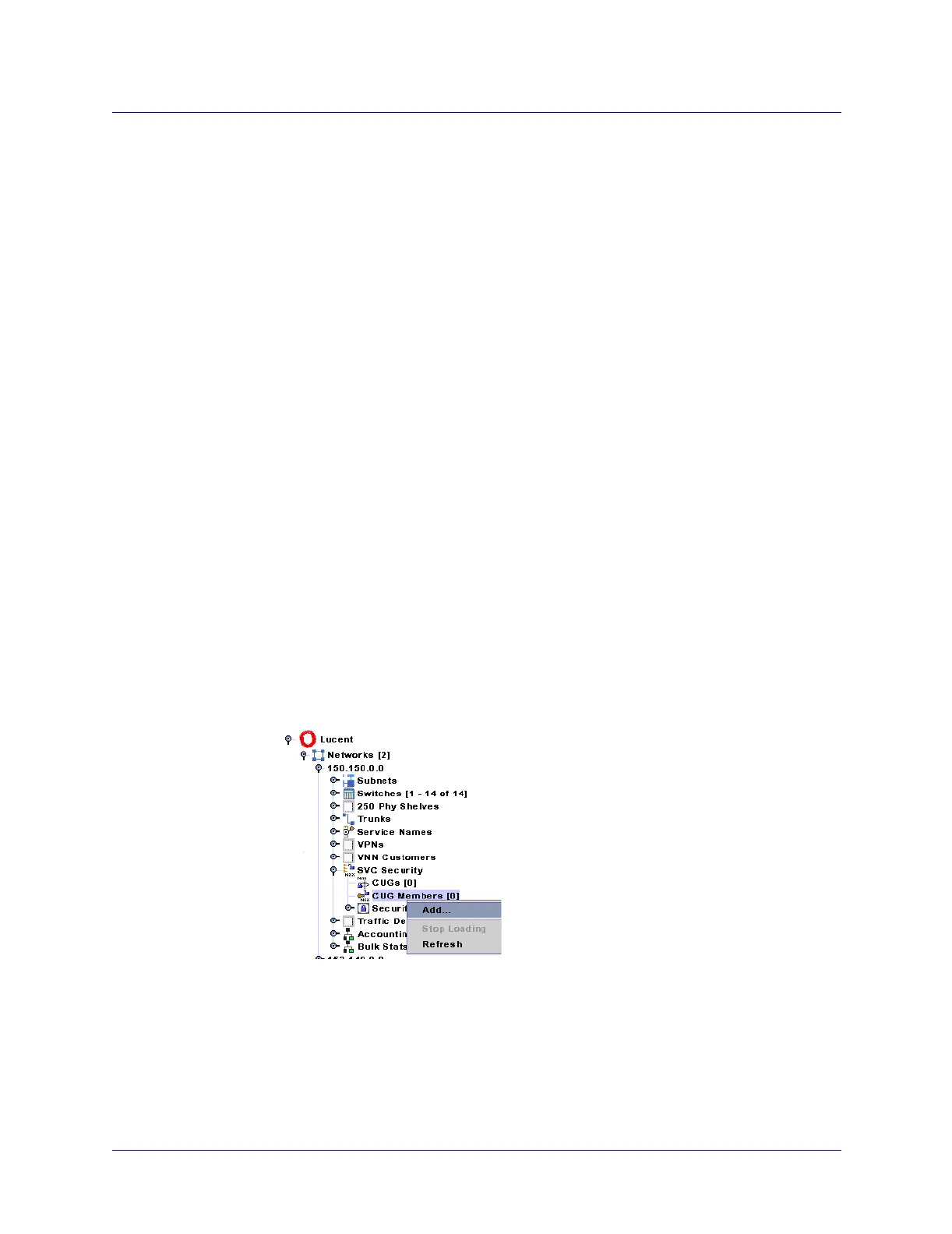Beta Draft Confidential
CUGs
Administrative Tasks
ATM Services Configuration Guide for CBX 3500, CBX 500, GX 550, and B-STDX 9000 1/19/0519-7
Administrative Tasks
Use the following sequence to configure CUGs. Remember that each member rule
should correspond to at least one SVC address.
1. Create SVC addresses and enable CUG termination (see
“CUG Termination” on
page 17-53
).
2. Define the CUG member rules that represent the member addresses and call
access. See “Defining CUG Members” below.
3. Define the CUG names (see “Defining a CUG” on page 19-9) and associate CUG
members to specific CUGs. You can also modify call access attributes for a
specific CUG.
Defining CUG Members
A CUG member is defined by a rule that matches one or more port addresses/prefixes
and attributes that specify incoming and outgoing call access. Once you define these
members, you can associate them with specific CUGs.
In the Networks tab, the SVC Security node contains CUGs and CUG Member nodes.
To define a CUG member:
1. In the Networks tab, expand the network you are managing.
2. Expand the SVC Security node.
3. Right-click on the CUG Members node and click Add on the popup menu, as
shown in Figure 19-2.
Figure 19-2. Defining a CUG Member
